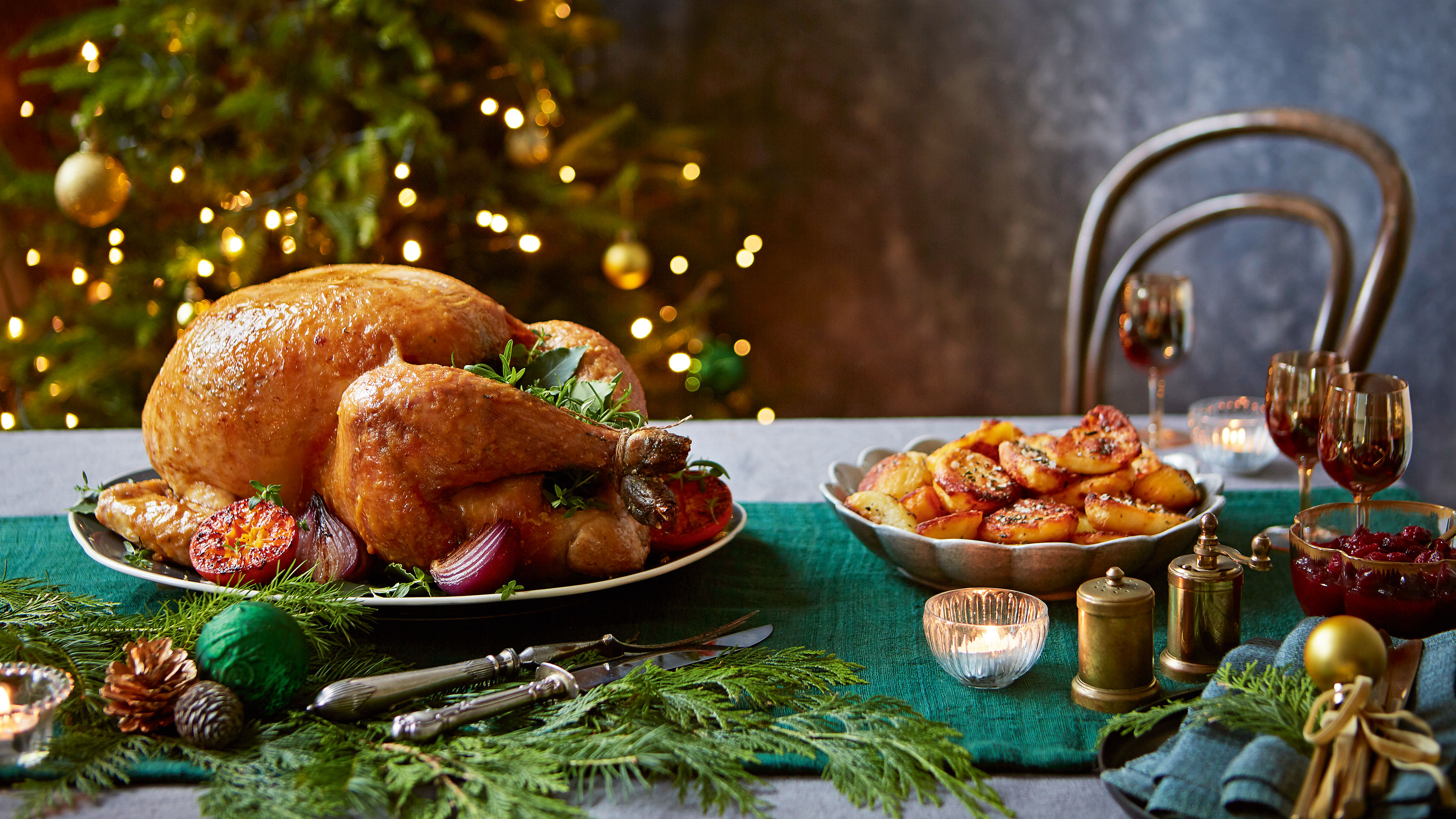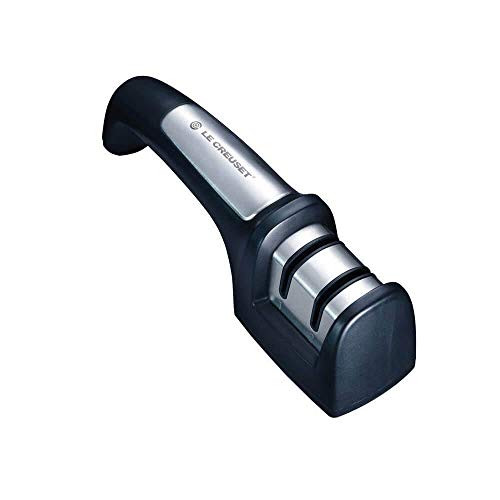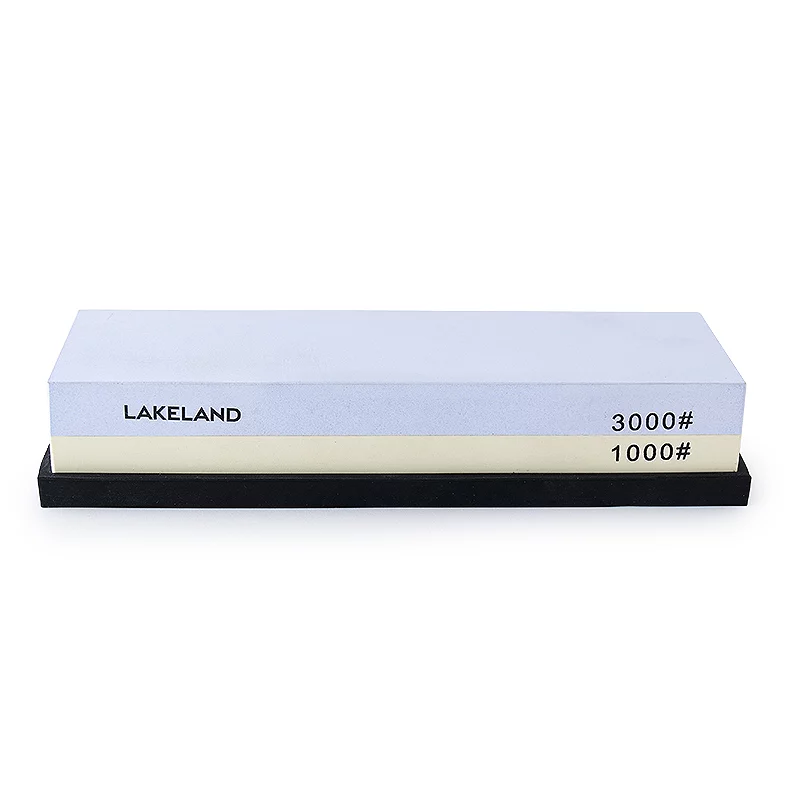How to sharpen a knife - 2 methods experts recommend to make carving Christmas dinner easier this year
Impress you guest with your knife skills this Christmas


Christmas is a little over a week away so we’re sure preparations are already well underway to ensure you and your family have the most enjoyable Christmas. Of course, a huge part of the festivities is Christmas dinner and while you may have done your big shop, have you sharpened your knives?
Owning one of the best knife sets won’t help carve your turkey, or slice and dice the trimmings if your blades are blunt. Luckily you can safely sharpen your knives at home to get the most out of them.
Sharp knives are easier to use and more effective, more importantly, sharpening your knives makes them safer. A blunt knife requires more force, which can cause the knife to twist or your hand to slip, risking cuts.
Here's how to sharpen knives to up your hosting game this Christmas.
How to sharpen knives using a whetstone
A whetstone sharpens knives by grinding the blade against an abrasive surface. Whetstones typically start at around £20 and are relatively simple to use.

‘Before you begin, soak the whetstone for at least ten minutes to ensure it works properly and supports the blade’s edge,’ explains Dean Harper, Chef and founder of Harper Fine Dining.
‘When sharpening, maintain an angle of around 15-20 degrees. A sharper angle can quickly dull the knife, while a flatter one won’t achieve the precision you need. Move the knife gently across the stone as if peeling an apple, always working towards you with a steady grip on the handle. Typically, three to four strokes per side are all it takes to restore a knife to its optimal sharpness.’
Dean recommends choosing a whetstone with a ‘grit’ between 1000 and 3000 as it: ‘offers the perfect balance, allowing you to maintain a fine edge without overworking the blade,’ he says. The grit of a whetstone means how abrasive it is - a lower grit has a rougher surface which is best for very blunt blades.

This kit is well suited to your expensive and budget kitchen knives. It also doesn't require sharpening oil - water works just as well.
How to sharpen knives using a hand-held sharpener
Using a hand-held sharpener is probably one of the easiest ways to keep your knife sharper for longer. As Carl Branigan, Country Head UK & Ireland of WÜSTHOF explains, this is because: ‘ both hand-held and electric knife sharpeners have pre-set angles to help guide your knife while sharpening,’ he says.

After choosing an appropriate grit for your knife (between 1000 and 3000), Carl says:
‘Place the hand-held knife sharpener on a flat surface. Hold the knife sharpener with one hand and the knife handle with the other.
‘Fully insert the blade into the slot perpendicular to the counter. Use only the weight of the knife and slowly pull the knife toward you through the appropriate notch. Avoid pressing down and exerting too much pressure on the knife as this can remove excess steel from the blade and compromise the edge of your knife.
‘Repeat this process, always pulling the blade from the heel to the tip – never back and forth – through either the coarse or the fine notch.’
For best results, Carl recommends regularly using the fine side of the sharpener and the course side twice a year.

Le Creuset is a luxury brand we all trust and £25 is a great price. It's safe for both left and right-handed people as the diamond-coated grinding wheels do all the work.
Ensuring your knives are sharp this Christmas will not only get you the most out of your meal - but it will keep you safe from harm, too. It's a win-win.
Get the Ideal Home Newsletter
Sign up to our newsletter for style and decor inspiration, house makeovers, project advice and more.

Kezia Reynolds joined the Ideal Home team as News Writer in September 2024. After graduating from City, University of London in 2022 with a bachelor’s degree in journalism, Kezia kicked off her career spending two years working on women’s weekly magazines. She is always on the lookout for the latest home news, finding you the best deals and trends - so you don’t miss a thing!
-
 Experts warn that these 5 mopping mistakes are making your floors dirtier — and damaging your floors in the process
Experts warn that these 5 mopping mistakes are making your floors dirtier — and damaging your floors in the processThis is how to keep them clean and avoid costly damage
By Lauren Bradbury
-
 Move over, fences – dead hedges are the wild and wonderful alternative your garden will love and they're easier to build than you'd think
Move over, fences – dead hedges are the wild and wonderful alternative your garden will love and they're easier to build than you'd thinkThe perfect eco-friendly solution for small gardens
By Kayleigh Dray
-
 Did you know John Lewis can make your old curtains or rugs look like new? Their repair service is now available in all stores
Did you know John Lewis can make your old curtains or rugs look like new? Their repair service is now available in all storesJohn Lewis has added another string to its bow, and it's great news for your old homeware
By Kezia Reynolds
-
 This beautiful mixing bowl is the unexpected star of so many kitchens – including Mary Berry's and the Bake Off tent
This beautiful mixing bowl is the unexpected star of so many kitchens – including Mary Berry's and the Bake Off tentThis earthenware bowl proves that you don't have to spend a huge amount for a classic kitchen addition
By Molly Cleary
-
 Dunelm has given its cult snuggle chair a new look - it's swapped classic stripes for another emerging pattern trend
Dunelm has given its cult snuggle chair a new look - it's swapped classic stripes for another emerging pattern trendI'm obsessed with this fresh new style
By Kezia Reynolds
-
 I tried Joseph Joseph's pan set with foldable handles – the space-saving design is just one of the many highlights
I tried Joseph Joseph's pan set with foldable handles – the space-saving design is just one of the many highlightsSmall kitchen? I tested this innovative Joseph Joseph space-savvy set which has foldable handles — and I loved it
By Annie Collyer
-
 As a stylist, I spend hours looking for bedding for photoshoots, and I just spotted these 6 expensive-looking sets at M&S
As a stylist, I spend hours looking for bedding for photoshoots, and I just spotted these 6 expensive-looking sets at M&SGet a little luxury at a high-street price
By Laurie Davidson
-
 I've been waiting to try out the Ninja Slushi for months – this is what happened the first time I tried it
I've been waiting to try out the Ninja Slushi for months – this is what happened the first time I tried itThe Ninja Slushi is the stuff of dreams for summer entertaining
By Molly Cleary
-
 IKEA has drenched its BILLY bookcase in this year’s ‘it’ colour - but you’ll have to act fast if you want to get your hands on one
IKEA has drenched its BILLY bookcase in this year’s ‘it’ colour - but you’ll have to act fast if you want to get your hands on oneI'm obsessed with this gorgeous limited-edition colourway
By Kezia Reynolds
-
 My go-to Ninja coffee machine just had a major price drop. It's more affordable than I've seen it before
My go-to Ninja coffee machine just had a major price drop. It's more affordable than I've seen it beforeIt makes coffee shop quality achievable at home
By Molly Cleary
-
 I'm a kitchen decor editor and didn't like this tableware trend - until I saw H&M Home's designer-look plates
I'm a kitchen decor editor and didn't like this tableware trend - until I saw H&M Home's designer-look platesThey made it easy to justify a new crockery set
By Holly Cockburn



